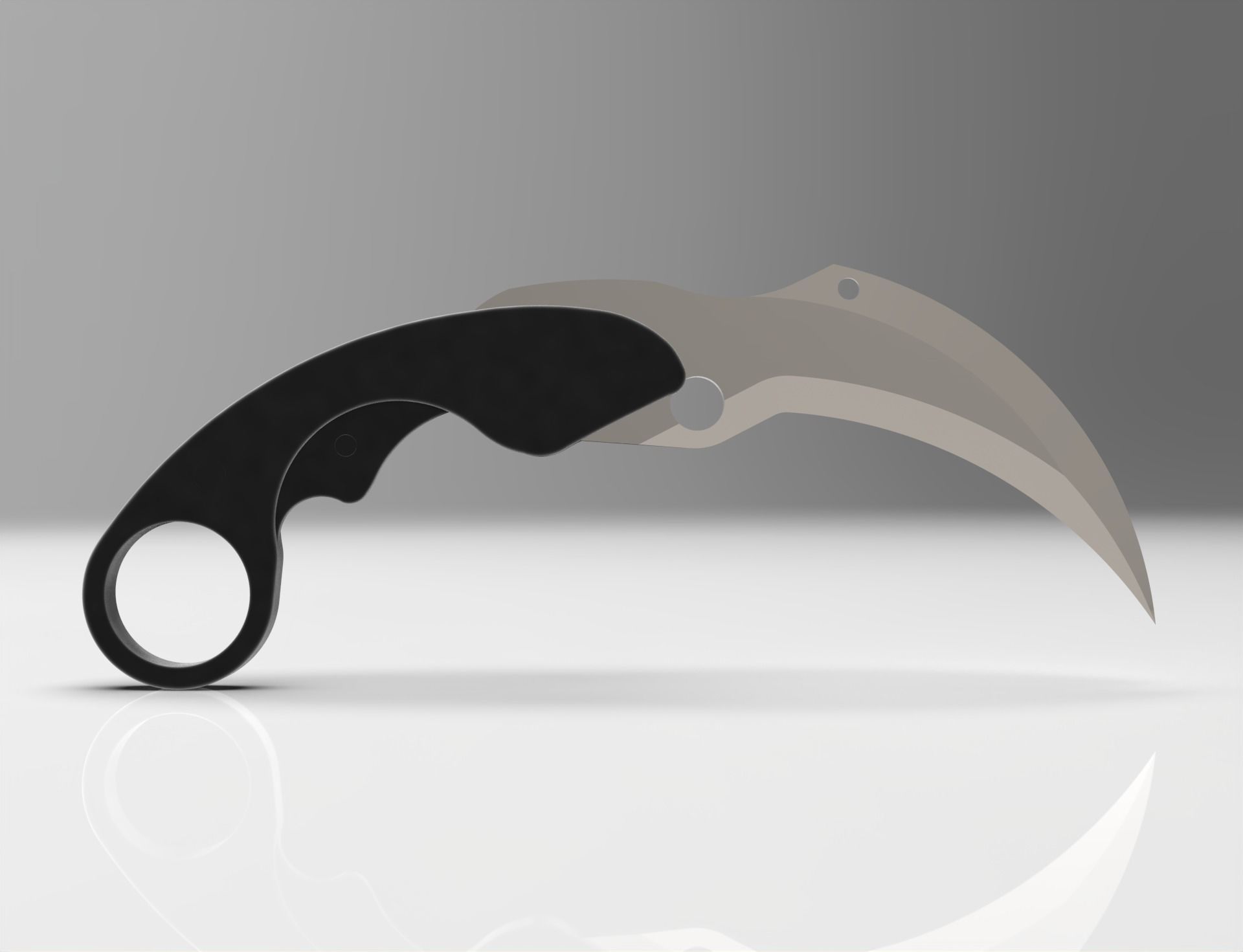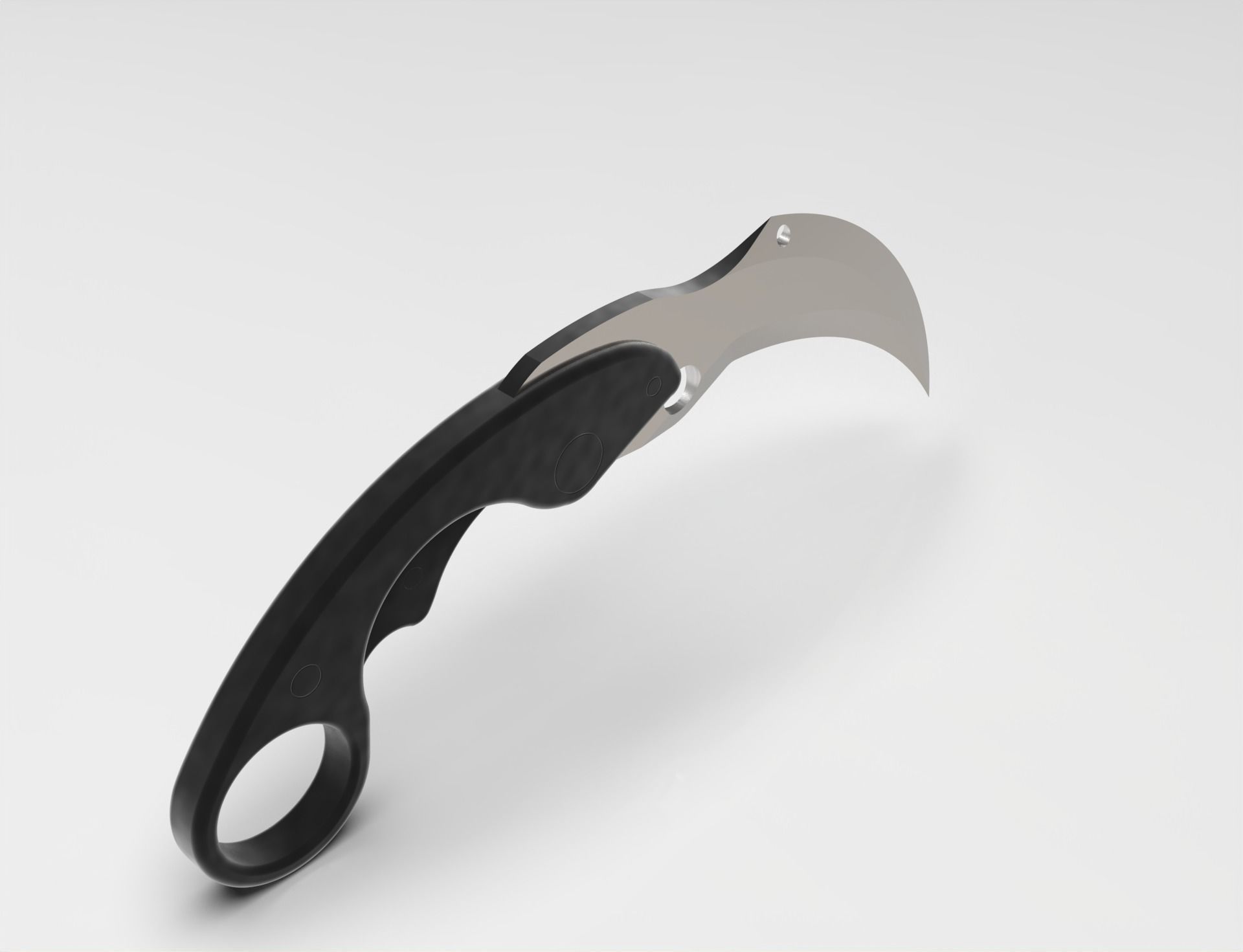
Karambit knife 3D print model
Karambit knife made in CATIA V5 and rendered in keyshot.
The Karambit was originally an agricultural implement designed to rake roots, gather threshing and plant rice in most of island Southeast Asia. It's a smaller variant of the Southeast Asian sickles (Filipino garab and karit; Indonesian celurit, arit, or sabit; and Malaysian sabit). It still possesses many efficient uses for the modern laborer, allowing use of the blade for utility work, with the finger ring eliminating the need to put the knife down between operations, if use of the fingers to manipulate the object to be worked on is required (such as the action of cutting and opening a shipping box, or removing plastic wrap from shipments, in two very basic examples). The finger ring also provides an added degree of protection against dropping the knife during use, which is particularly essential in work environments that include heavy machinery, into which dropping a handheld, metal tool of any kind can cause massive damage to the equipment and those around it, especially if the tool is ejected at high velocity from rotating components. The karambit is believed to have originally been weaponized among the Minangkabau people of West Sumatra[2] where, according to folklore, it was inspired by the claws of a tiger. As it was weaponised, the blade became more curved to maximise cutting potential. Through Indonesia's trade network and close contact with neighbouring countries, the weaponization of the karambit was eventually dispersed through what are now Thailand, Cambodia, Laos, Myanmar and the Philippines.[3][4]
European accounts tell that soldiers in Indonesia were armed with a kris at their waist or back and a spear in their hands, while the karambit was used as a last resort when the fighter's other weapons were lost in battle. The renowned Bugis warriors of Sulawesi were famous for their embrace of the karambit. Today it is one of the main weapons of silat and is commonly used in Filipino martial arts as well.[5]
Superficially, the karambit resembles the jambiyah, although there is no connection. The jambiyah was always designed as a weapon and serves as a status marker, often made by skilled artisans and jewelers using precious stones and metals, whereas the karambit was and still remains an unadorned farmer's implement and utility knife.[5]




